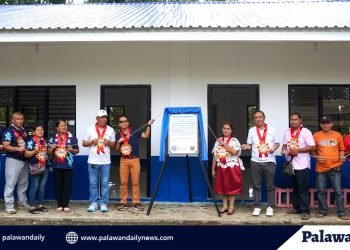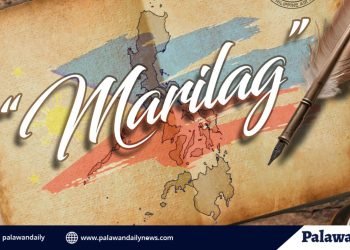Far out in the turquoise waters of the West Philippine Sea lies Pag-asa Island, a small but significant piece of land in Kalayaan Island Group (KIG), Palawan. To many, it’s just a distant island marked on maps, quiet, remote, and often mentioned only in the news about territory and defense. But beyond the political lines, Pag-asa Island holds a secret worth protecting, a thriving natural world that plays a vital role in our planet’s balance.
In 2023, a team of researchers from the Department of Environment and Natural Resources (DENR) set foot on the island to study its beach forest ecosystem a unique community of trees and plants growing right where the land meets the sea. Their findings revealed not only beauty but also a warning.
Within the 7-hectare stretch of Pag-asa’s beach forest, they recorded 20 species of plants belonging to 19 different families. Among them stood the tall and sturdy Barringtonia asiatica (Botong) and the graceful Calophyllum inophyllum (Bitaog) trees that have silently guarded the island’s shores for generations. These trees do more than provide shade. They protect the coastline from strong winds and waves, serve as nesting grounds for birds, and store massive amounts of carbon helping fight climate change. Additionally, the forest in Pag-asa Island also helps sustain the aquifer beneath the island, which serves as the main source of fresh water
for the community. Notably, Pag-asa Island is the only island in the entire Kalayaan Island Group (KIG) that possesses a natural source of fresh groundwater.
In fact, the study found that the island’s forest holds around 9,600 tons of carbon dioxide in its trees and soil. That’s the equivalent of removing thousands of cars’ emissions from the air each year. For such a small island, that’s an incredible contribution to keeping the Earth cool.
But this living treasure is under threat. Satellite images from 2017 to 2023 show a worrying picture tree cover in Pag-asa Island dropped from 11 hectares to just 1.7 hectares, while built-up areas doubled. The once-green landscape is slowly giving way to concrete and bare ground. Without its forest, the island loses more than just trees it risks erosion, biodiversity loss, and even the safety of its community.
The researchers also found that some species dominate the forest, making it less diverse than before. When only a few species thrive, the ecosystem becomes more fragile. A single storm, disease, or drought could easily wipe out large parts of it. That’s why diversity is key it’s nature’s way of ensuring survival.
Despite these challenges, the story of Pag-asa’s forest is one of hope. The study showed that even small, isolated islands can make a big difference in protecting biodiversity and combating climate change. By planting native trees, reducing land conversion, and protecting remaining forest patches, we can give Pag-asa Island and the entire West Philippine Sea a fighting chance.
The West Philippine Sea is more than a stretch of blue on the map. Beneath its waves and along its shores live ecosystems that protect, feed, and inspire us. From the corals beneath to the trees above, it is a living reminder that biodiversity is our strongest defense against a changing world.
While people often regard these islands as strategic territories, in nature’s eyes, they are sanctuaries nurturing life that sustains us all.”So the next time we hear about the West Philippine Sea, let’s remember not just the borders that divide us, but the biodiversity that unites us the trees of Pag-asa, the coral reefs, the seagrass beds, and all the living things that silently work together to keep our seas alive.
to read more about the study:
Generated from PAF EDFS
Gestiada, A. S., Castillo, J. A. A., Manahan, J. R. F., Bernales, M. M. G., & Romena, N. (2025). Species diversity, community structure, and biomass carbon stock of beach forest in Pag-asa Island, Kalayaan, Palawan, the Philippines. Philippine Journal of Science, 154(4), 855-866.





















